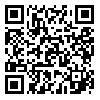BibTeX | RIS | EndNote | Medlars | ProCite | Reference Manager | RefWorks
Send citation to:
URL: http://jdisabilstud.org/article-1-2535-en.html

 , Gholamreza Golmohammad Najad Bahrami *2
, Gholamreza Golmohammad Najad Bahrami *2 
 , Hamideh Porkar3
, Hamideh Porkar3 
 , Isa Barghi4
, Isa Barghi4 
 , Sayad Abdollahi Asl1
, Sayad Abdollahi Asl1 
 , Parvin Bahari1
, Parvin Bahari1 

2- Assistant Professor, Department of Educational Sciences, Azarbaijan Shahid Madani University, Tabriz, Iran
3- MA in Educational Psychology, Azarbaijan Shahid Madani University, Tabriz, Iran
4- Associate Professor, Department of Educational Sciences, Azarbaijan Shahid Madani University, Tabriz, Iran
Background & Objectives: Mind and language distinguish humans from other creatures. Social cognition is among the factors shaping the child's personality. Social cognition has a multidimensional structure and includes areas such as empathy, social perception, information processing, document style, and theory of mind. In evolutionary psychology, the theory of mind has many topics. This structure refers to the ability to understand and attribute mental states such as wishes, knowledge, and desires to oneself and others. One of the problems of the mind is intellectual disability. Teaching mind theory is related to the cognitive and emotional processes of language. Many researchers have studied the theory of mind, but a few have examined the components of language skills. Can mind theory training explain the language skills of children with disabilities? This study aimed to determine the effectiveness of mind theory training in improving the linguistic abilities (syntax, semantics, and phonology) of children with teachable IQ. Also, the role of the gender variable was examined.
Methods: The method of the present study was quasi–experimental with a pretest–posttest design with a control group. By the available sampling method, 40 students (20 boys and 20 girls) were selected from 7– to 9–year–old students with teachable IQs living in Baneh City, Iran, in the 2018–2019 academic year. They were randomly divided into experimental and control groups (20 people each). The condition for conducting this research has a specific age and entry criteria, i.e., obtaining a suitable score (between 55 to 70) on the Wechsler Intelligence Scale. The exclusion criterion was disagreement and willingness to continue participating and being absent from training sessions. The language test of TOLD–p3 (Hassanzadeh and Minaei, 2000) was used to collect information in the pretest and posttest for two groups. The reason for using this tool is the comprehensiveness of this test in measuring language development. This test includes 225 items and 9 subtests (6 main and 3 supplementary subtests). The main subtests include visual vocabulary, relational vocabulary, oral vocabulary, grammatical comprehension, sentence imitation, and grammatical completion. Subtests include word differentiation, phonological analysis, and word production. The experimental group was trained in mind theory for 16 sessions twice a week for 20 to 30 minutes. The test was performed again on both groups. The obtained data were analyzed using descriptive statistics (mean and standard deviation) and inferential statistics (multivariate analysis of covariance and 2–factor multivariate analysis of covariance) at a significance level of 0.05 in SPSS software version 24.
Results: The results of multivariate analysis of covariance showed that theory of mind training was effective in improving the syntactic ability (p=0.002) and semantic ability (p<0.001) of students with teachable intellectual disabilities. However, it had no significant effect on improving phonological ability (p=0.068). The results of the 2–factor multivariate analysis of covariance related to changes in group and gender interaction were not significant (p=0.350). Therefore, teaching theory of mind does not affect the language abilities of students with intellectual disabilities by gender.
Conclusions: Mental and language functions are very important in students with intellectual disabilities. According to the study results, through teaching theory of mind, the syntactic and semantic ability of students with intellectual disabilities can be improved. Therefore, it is recommended to use mind theory training in students' exceptional centers.
| Rights and permissions | |
 |
This work is licensed under a Creative Commons Attribution-NonCommercial 4.0 International License. |

